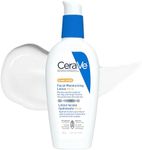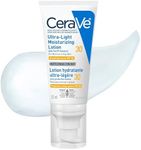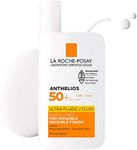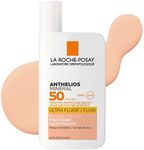Buying Guide for the Best Facial Sunscreens
Choosing the right facial sunscreen is important for protecting your skin from harmful UV rays, preventing premature aging, and reducing the risk of skin cancer. The best sunscreen for you will depend on your skin type, daily activities, and personal preferences. Understanding the key features of facial sunscreens will help you make an informed decision and ensure you get the protection and comfort you need.SPF (Sun Protection Factor)SPF measures how well a sunscreen protects your skin from UVB rays, which are the main cause of sunburn and contribute to skin cancer. The higher the SPF number, the greater the level of protection. SPF values are typically divided into low (under 15), medium (15-30), and high (30+). For everyday use, most people do well with SPF 30, which blocks about 97% of UVB rays. If you spend a lot of time outdoors or have very fair or sensitive skin, you might want to choose a higher SPF. For mostly indoor activities, a lower SPF may be sufficient, but daily use of at least SPF 30 is generally recommended.
Broad Spectrum ProtectionBroad spectrum means the sunscreen protects against both UVA and UVB rays. UVA rays penetrate deeper into the skin and are responsible for premature aging and some skin cancers, while UVB rays cause sunburn. Not all sunscreens offer broad spectrum protection, so it's important to check the label. If you want comprehensive protection against both burning and aging effects of the sun, always choose a sunscreen labeled as 'broad spectrum.'
Formulation (Chemical vs. Mineral)Facial sunscreens come in two main types: chemical and mineral (also called physical). Chemical sunscreens absorb UV rays and convert them into heat, while mineral sunscreens use ingredients like zinc oxide or titanium dioxide to physically block and reflect UV rays. Chemical sunscreens tend to be lighter and less visible on the skin, making them a good choice for daily wear or under makeup. Mineral sunscreens are often preferred by those with sensitive skin or concerns about certain chemical ingredients, but they can sometimes leave a white cast. Your skin type, sensitivity, and personal preference should guide your choice here.
Texture and FinishThe texture and finish of a facial sunscreen can affect how comfortable it feels and how well it works with your skincare or makeup routine. Sunscreens can be lightweight and matte, rich and moisturizing, or somewhere in between. If you have oily or acne-prone skin, look for oil-free or mattifying formulas. If your skin is dry, a hydrating or creamy sunscreen may be more comfortable. For those who wear makeup, a lightweight, non-greasy finish is often best. Testing a small amount or reading reviews can help you find a texture that suits your needs.
Water ResistanceWater resistance indicates how well a sunscreen stays on your skin when exposed to water or sweat. Water-resistant sunscreens are labeled with the amount of time (usually 40 or 80 minutes) they remain effective while swimming or sweating. If you plan to be active outdoors, swim, or sweat, choose a water-resistant sunscreen. For everyday indoor use, water resistance may not be as important.
Added Skincare BenefitsSome facial sunscreens include extra ingredients like antioxidants, moisturizers, or anti-aging compounds. These can provide additional benefits, such as hydration, soothing sensitive skin, or fighting free radicals. If you want to simplify your routine, look for sunscreens that offer these added benefits. However, if you already use other skincare products, you may prefer a basic sunscreen without extras.
Fragrance and SensitivityFragrance in sunscreen can make the product more pleasant to use, but it can also irritate sensitive skin or cause allergic reactions. If you have sensitive or allergy-prone skin, look for fragrance-free or hypoallergenic options. If you enjoy a light scent and have no sensitivity, a fragranced sunscreen may be fine for you.



















